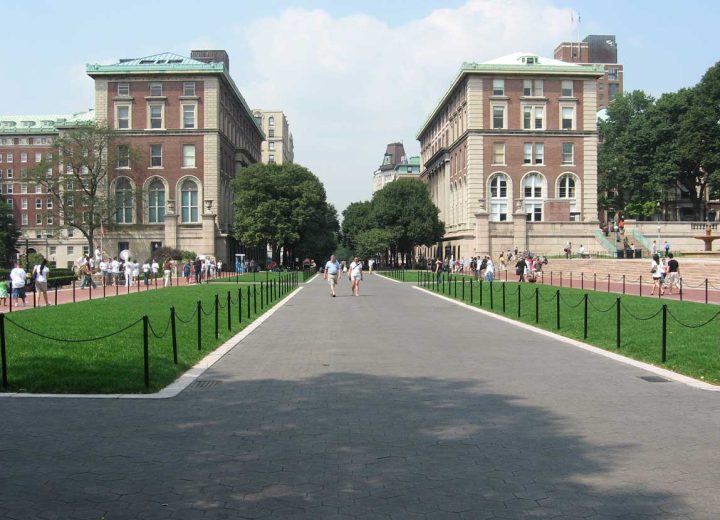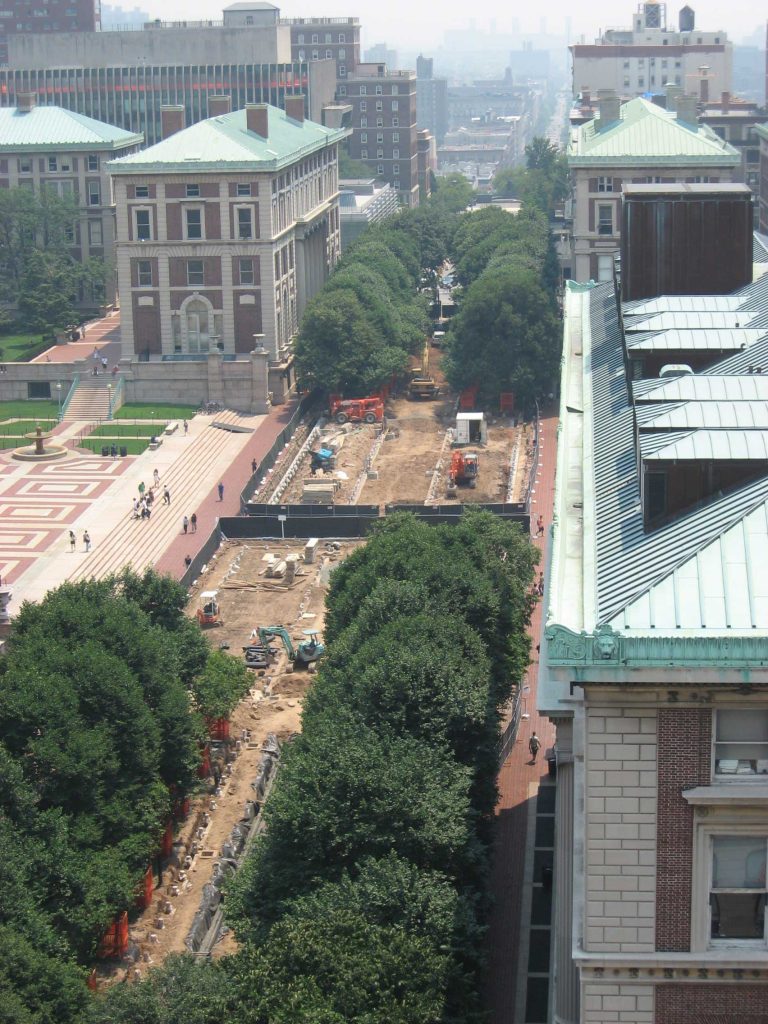More than 50 years of heavy use had taken its toll, and the plaza was riddled with pooled water and heaved and cracked pavers. Because restoration would shut down this essential conduit, what normally would have been a six-month project would need to be completed in half that time, during the summer intersession.
Because the university wanted to maintain the aesthetic character of the plaza, the project team faced the design challenge of creating a pedestrian walkway with hexagonal asphalt pavers that was resilient enough to withstand 40-ton delivery trucks. Hoffmann Architects + Engineers designed and oversaw construction of a plaza that looked like the original but used an innovative subsurface composition that could hold its own against the rigors of constant usage. A reconfigured drainage system eliminated the large puddles that had long plagued pedestrians, and new granite curbing tied in with the architectural vocabulary of the historic campus.
In keeping with the university’s commitment to the environment, old asphalt pavers were recycled, and their replacements integrated reclaimed material. The new lighting scheme improved safety while reducing light pollution and energy consumption.
Despite its complexity, the project was completed in time for the fall start of classes. The university’s assistant vice president for campus operations best articulated the impact of the rehabilitated College Walk: “Its restoration will ensure the beauty of Columbia’s central campus for years to come.”

